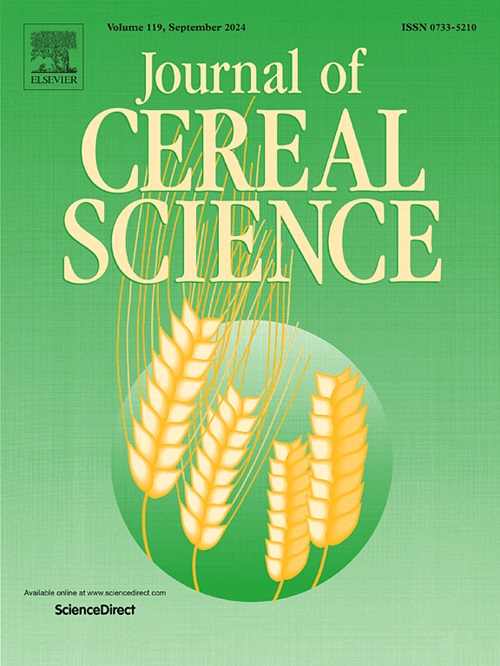Radiofrequency/cold plasma drying of black wheat flour: enhanced extractability of bound phenolics, 3D printing adaptability, and enhanced antioxidant activity after steaming
IF 3.7
2区 农林科学
Q2 FOOD SCIENCE & TECHNOLOGY
引用次数: 0
Abstract
This study compared the effects of RF and CP drying on the bioactivity and 3D printing performance of black wheat flour. The aim was to expand the processing depth of black wheat flour in cereal products. After RF and CP treatments, starch granule surfaces exhibited varying degrees of damage, with surface damage becoming more pronounced as treatment time increased, making the black wheat flour surface more porous and has more ability to absorbers water. RF and CP treatments initially enhanced rheological properties; however, prolonged treatment led to starch granule damage, subsequently weakening the gluten network and reducing rheological performance. The rapid alternating electromagnetic field of RF and the ionized particles generated by CP can disrupt the cell walls of black wheat flour, releasing phenolic compounds originally bound by covalent bonds and significantly increasing the total phenolic and total flavonoid content of the samples. Additionally, CP-15 exhibited the best 3D printing performance, featuring complete and smooth patterns that retained good porosity after steaming. The antioxidant activity of 3D-printed steamed bread made from the treated flour was also significantly enhanced. These results have expanded the long-term commercial application of RF and CP in cereal processing.
黑小麦粉的射频/冷等离子干燥:增强结合酚类物质的可提取性,3D打印适应性,并增强蒸后的抗氧化活性
本研究比较了RF和CP干燥对黑小麦粉生物活性和3D打印性能的影响。目的是扩大黑小麦粉在谷类产品中的加工深度。经RF和CP处理后,淀粉颗粒表面出现不同程度的损伤,随着处理时间的增加,表面损伤更加明显,使黑小麦面粉表面多孔性更强,吸水能力更强。RF和CP处理最初增强了流变性能;然而,长时间处理导致淀粉颗粒损伤,随后削弱面筋网络和降低流变性能。RF的快速交变电磁场与CP产生的电离粒子可以破坏黑小麦粉的细胞壁,释放出原本由共价键结合的酚类化合物,显著提高样品的总酚和总黄酮含量。此外,CP-15具有最佳的3D打印性能,具有完整和光滑的图案,在蒸煮后保持良好的孔隙率。3d打印馒头的抗氧化活性也明显增强。这些结果扩大了RF和CP在谷物加工中的长期商业应用。
本文章由计算机程序翻译,如有差异,请以英文原文为准。
求助全文
约1分钟内获得全文
求助全文
来源期刊

Journal of Cereal Science
工程技术-食品科技
CiteScore
7.80
自引率
2.60%
发文量
163
审稿时长
38 days
期刊介绍:
The Journal of Cereal Science was established in 1983 to provide an International forum for the publication of original research papers of high standing covering all aspects of cereal science related to the functional and nutritional quality of cereal grains (true cereals - members of the Poaceae family and starchy pseudocereals - members of the Amaranthaceae, Chenopodiaceae and Polygonaceae families) and their products, in relation to the cereals used. The journal also publishes concise and critical review articles appraising the status and future directions of specific areas of cereal science and short communications that present news of important advances in research. The journal aims at topicality and at providing comprehensive coverage of progress in the field.
 求助内容:
求助内容: 应助结果提醒方式:
应助结果提醒方式:


